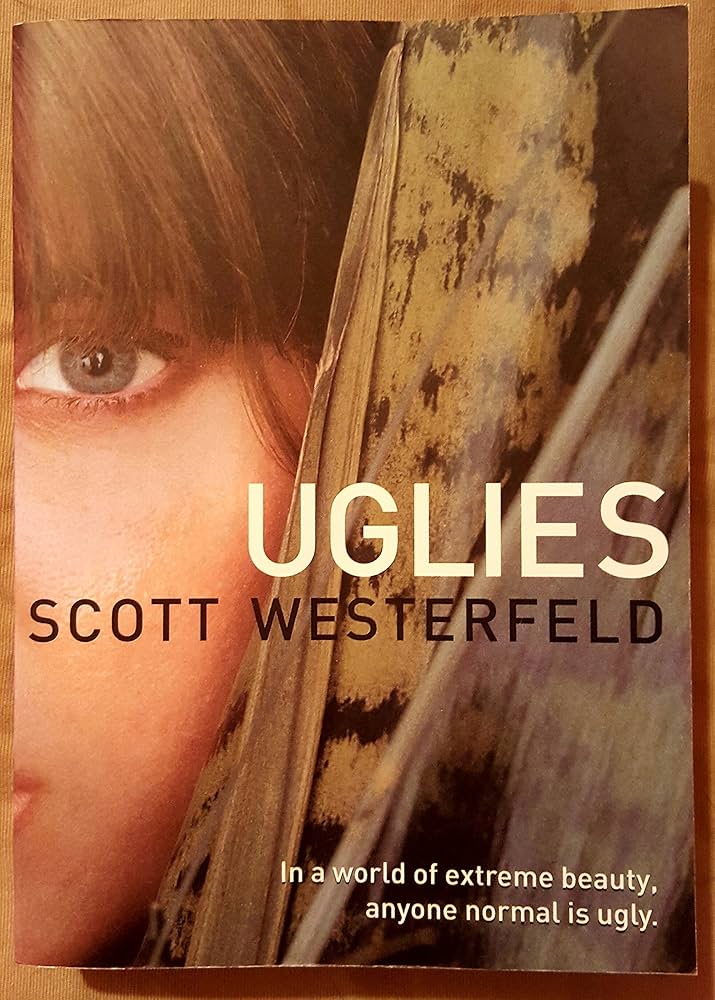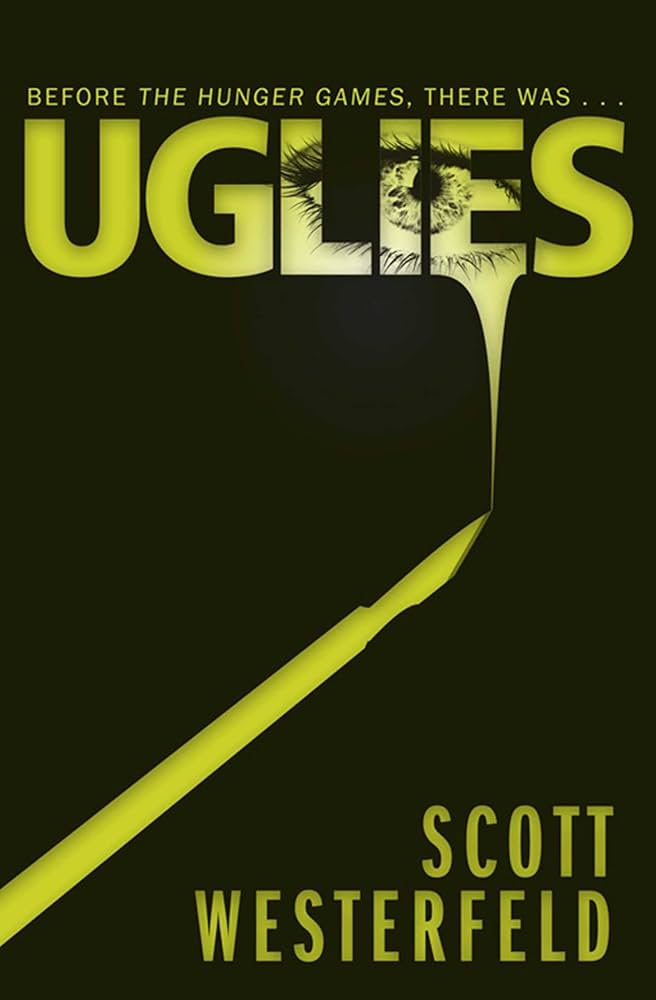*Uglies*: A Deep Dive into a Dystopian Classic and its Complex Legacy

The Uglies trilogy, penned by Scott Westerfeld, holds a unique place in young adult dystopian fiction. While not as culturally ubiquitous as The Hunger Games or Divergent, its impact on adolescent readers, particularly those grappling with body image issues, remains significant and, unfortunately, complex. This exploration delves into the trilogy’s narrative, thematic complexities, and lasting, albeit problematic, influence.
A Look at Uglies, Pretties, and Specials
Published between 2005 and 2006, Uglies, followed by Pretties and Specials, forms the core of the Uglies series. A fourth book, Extras, and a subsequent quartet, the Impostors series, further expand the universe, but this analysis focuses on the original trilogy’s impact. Extras is omitted because its themes are largely separate, while the Impostors series is too recent and lacks the significant cultural footprint of the original trilogy.

This review adopts a different approach than typical plot summaries. While the Uglies books feature intriguing science fiction concepts and insightful cultural commentary, the narratives themselves are lean on plot development. Instead of focusing on detailed plot recaps, this discussion emphasizes the books’ core themes, their impact on readers, and areas where the execution falters.
The Uglies trilogy explores a future where society is rigidly stratified by age and appearance. Littlies, children, inhabit sprawling suburbs, followed by a phase of adolescence – the Uglies – characterized by relative freedom but an intense anticipation of their 16th birthday. At 16, individuals undergo mandatory cosmetic surgery, transforming them into virtually identical Pretties. The Pretties reside in a technologically advanced city, their lives devoted to relentless partying and leisure, a stark contrast to the Uglies’ structured, less glamorous existence. Subsequent surgeries transition them through the stages of Middle-Pretties (adults with jobs) and finally, Crumblies (elderly individuals).

This societal structure, while seemingly utopian in its provision of resources and lack of hardship, serves as a powerful critique of conformity and societal pressures. The terms “Ugly,” “Pretty,” “Middle-Pretty,” and “Crumbly” are not merely stylistic choices; they reflect the simplistic, almost childlike thinking encouraged within this society. The government meticulously controls its citizens’ identities, eliminating individuality through standardized beauty. The underlying rationale, taught to each generation, is that the previous generation – the “Rusties” – destroyed the world through unchecked technological advancement and conflict, which the current society views as primarily fueled by physical disparities in attractiveness. This society’s creation eliminates racial differences, with all citizens possessing a vague olive complexion, suggesting an attempt to eradicate prejudice stemming from visual differentiation. The irony, of course, is that this extreme form of social engineering itself reflects a deep distrust in humanity’s capacity for compassion and mutual respect.

Underlying this manufactured harmony is a dark secret: the Pretty operation subtly damages the brain, inducing docility and contentment among the populace. Those in specialized fields needing heightened intelligence have these lesions treated as adults, but for most, the consequences of the transformation remain largely unnoticed, accepted as simply “growing up.”
Tally Youngblood, the protagonist, initially embodies this societal acceptance. She shares the Uglies’ aspirations to become Pretty, until her friendship with Shay, a nonconformist who rejects the operation and flees to the Smoke, an underground community of rebels in the wilderness. Tally’s journey through the trilogy is a gradual awakening, marked by betrayals, self-discovery, and ultimately, rebellion.
Book 1: Uglies centers around Tally’s mission, coerced by Special Circumstances (elite enforcers of societal norms), to infiltrate and betray the Smoke. She initially complies, but her experience in the Smoke prompts a change of heart. She ultimately chooses to protect the Smoke’s location, setting off a chain of events culminating in her becoming Pretty. She does this as a means of ultimately providing the Smoke with a chance to create a cure for the lesions induced by the transformation.
Book 2: Pretties shows Tally and Shay, now Pretties, struggling to break free from the pervasive societal conditioning. Their memory of the Smoke has been significantly altered, yet an underlying sense of unease lingers. The introduction of the “Cutters,” a clique who self-harm to maintain lucidity, highlights the book’s more problematic aspects.
Book 3: Specials depicts Tally and Shay as Specials, individuals with enhanced physical and mental capabilities. It’s revealed that individuals who retain some level of independent thought after their Pretty operation are recruited into this elite group. Here, the themes of enforced conformity and individuality are further explored through the lens of enhanced abilities and ethical dilemmas.
The Messy Legacy: Self-Harm, Conformity, and Unintentional Impact
The Uglies trilogy’s lasting impact is multifaceted. Its social commentary on beauty standards, peer pressure, and environmentalism is clear, yet the narrative’s execution presents thematic inconsistencies. The portrayal of individualism and conformity is flawed. While the story’s intent centers on the importance of self-acceptance and challenging societal norms, Tally’s extraordinary resilience overshadows other characters, diminishing the message of collective empowerment. The narrative’s focus on Tally’s unique journey, along with the book’s overall tone, risks minimizing the pervasive societal control illustrated throughout the series.
The most problematic aspect of the Uglies series is the depiction of self-harm. While not intended as endorsement, the presentation of self-harm as a means to achieve lucidity and resist societal conditioning, particularly within a seemingly positive clique like the Cutters, presents an exceptionally dangerous message to vulnerable readers.
The trilogy’s ambiguous handling of this theme is the root of its complex legacy, potentially triggering harmful behaviors among readers susceptible to such issues. Although the books attempt to present self-harm as ultimately destructive, the positive presentation of Cutters and their heightened capabilities muddies this messaging, unintentionally normalizing these actions and potentially providing a dangerous roadmap for those already at risk.
A Potential for Reconstruction
While the Uglies trilogy has shortcomings, there is significant potential to refocus its narratives. One major flaw is the central focus on Tally, often at the expense of Shay’s story. Their journey is meant to portray contrasting perspectives on conformity and self-acceptance, yet Shay is largely marginalized by the end of the original trilogy. A stronger narrative would emphasize their intertwined journey, illustrating how their self-perceptions and the changing dynamics of their friendship reflect the challenges of societal pressures and individual choice. The evolution of their relationship and perception of their identities would become a more compelling representation of the complex emotions associated with societal conformity and the challenges faced in adolescence.
The upcoming Netflix adaptation presents an opportunity to rectify some of these flaws. A successful adaptation would need to either refine the source material’s ambiguous messaging or fundamentally reinterpret the narrative to convey a more nuanced and responsible treatment of complex themes like self-harm, societal pressure and individuality. The essence of the Uglies books—a dystopian exploration of beauty standards and societal control—deserves a more robust and ethical exploration.